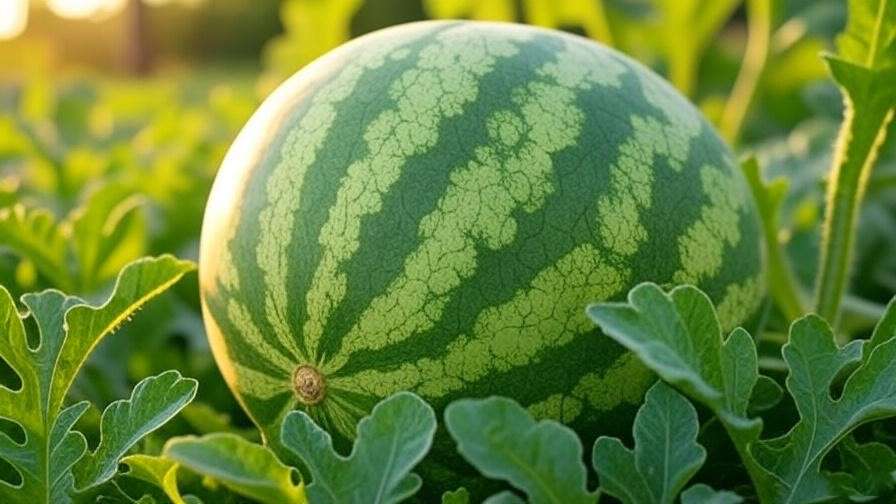Imagine slicing into a watermelon that reveals not the familiar red-pink flesh but a striking, vibrant blue hue—a true showstopper in any garden or kitchen. The blue watermelon, a rare and visually captivating hybrid, is gaining popularity among plant enthusiasts and home gardeners for its unique appearance and sweet, juicy flavor. Whether you’re a seasoned gardener or a curious beginner, mastering how to grow and care for a blue watermelon can transform your garden into a conversation piece. In this comprehensive guide, we’ll walk you through every step—from selecting seeds to harvesting ripe fruit—with expert-backed tips to ensure your plants thrive. Backed by years of horticultural experience and insights from agricultural research, this article addresses your need for practical, actionable advice to cultivate this exotic fruit successfully.
What Is a Blue Watermelon?
Origins and Characteristics
Blue watermelons are a hybrid variety of Citrullus lanatus, developed through selective breeding to produce their distinctive blue flesh, attributed to high levels of anthocyanins—natural pigments also found in blueberries and purple grapes. Unlike traditional watermelons, blue watermelons often have a compact size, with fruits weighing 5-10 pounds, making them ideal for smaller gardens. Their rind is typically striped, similar to classic varieties, but the flesh offers a sweet, refreshing taste with a hint of berry-like undertones. Originating from experimental breeding programs in Asia and later refined by horticulturists worldwide, these plants are now accessible to home growers through specialty seed suppliers.
Benefits of Growing Blue Watermelons
Why choose blue watermelons for your garden? Beyond their eye-catching appearance, they’re packed with antioxidants, thanks to their anthocyanin content, offering health benefits like improved heart health and reduced inflammation. Their unique look makes them a standout for ornamental gardening, perfect for creating Instagram-worthy displays. Additionally, their novelty can attract attention at local farmers’ markets, providing an opportunity for small-scale sales. For plant care enthusiasts, growing blue watermelons is a rewarding challenge that showcases your gardening prowess.
Preparing to Grow Blue Watermelons
Choosing the Right Environment
Blue watermelons thrive in warm, sunny climates, ideally in USDA hardiness zones 8-11, where temperatures consistently range between 70-90°F. They require at least 6-8 hours of direct sunlight daily to support vigorous growth. Soil should be well-draining, fertile loam with a pH of 6.0-7.0, as watermelons are sensitive to waterlogged conditions. If your garden space is limited, consider raised beds or containers, ensuring at least 2-3 feet of space per plant to accommodate their sprawling vines.
Selecting Quality Seeds or Seedlings
Sourcing authentic blue watermelon seeds is critical for success. Reputable suppliers, such as specialty nurseries or online seed banks like RareSeeds.com, offer certified hybrid varieties. Look for seeds labeled as “Blue Moon” or “Sapphire Sweet,” common names for blue-fleshed cultivars. If starting with seedlings, choose those with sturdy stems and vibrant green leaves, avoiding any with yellowing or wilting. Check for signs of healthy root systems if purchasing transplants from local nurseries.
Timing Your Planting
Timing is everything when planting blue watermelons. Sow seeds in spring, after the last frost, when soil temperatures reach at least 65°F. In most regions, this falls between April and early June. For cooler climates, start seeds indoors 3-4 weeks before transplanting to give plants a head start. Consult your local agricultural extension service for region-specific planting calendars to optimize growth.
Step-by-Step Guide to Planting Blue Watermelons
Soil Preparation
Healthy soil sets the foundation for thriving blue watermelon plants. Test your soil’s pH and nutrient levels using a home testing kit or lab analysis. Amend acidic soils with lime or alkaline soils with sulfur to achieve the ideal 6.0-7.0 pH range. Incorporate organic matter, such as compost or well-rotted manure, to boost fertility and improve drainage. A 2-3 inch layer of organic mulch, like straw or wood chips, helps retain moisture and suppress weeds.
Planting Seeds or Seedlings
For seeds, plant them 1-2 inches deep in small mounds or hills, spacing them 3-4 feet apart in rows 6-8 feet apart to allow for vine spread. Each mound can hold 2-3 seeds, thinned to the strongest seedling after germination. If using transplants, dig holes slightly larger than the root ball, place the seedling, and backfill with soil, ensuring the root crown sits level with the ground. Water thoroughly after planting to settle the soil.
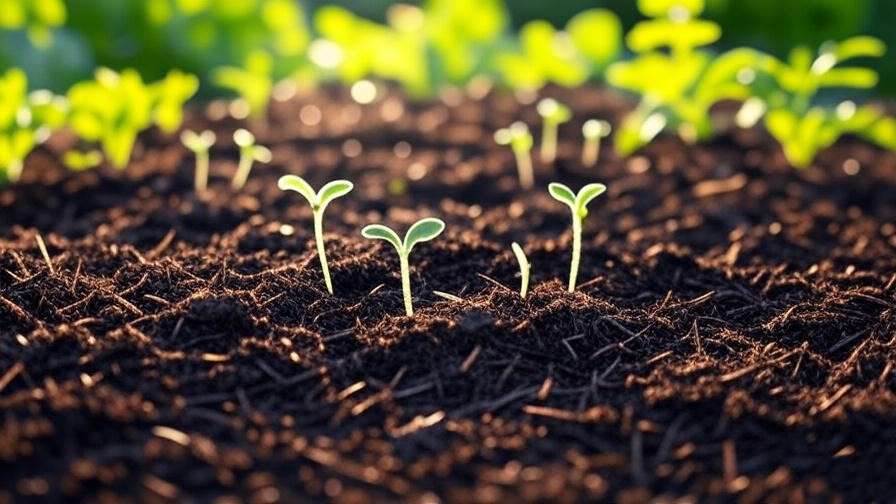
Watering and Initial Care
Blue watermelons need consistent moisture during germination and early growth. Water seeds daily with a gentle spray to keep soil moist but not soggy. Once seedlings emerge (typically within 7-10 days), reduce watering to 1-2 inches per week, depending on rainfall. Apply mulch around plants to maintain soil moisture and prevent weed competition. Avoid overhead watering to minimize fungal risks.
Caring for Blue Watermelon Plants
Watering Requirements
Proper watering is crucial for healthy blue watermelon plants. Aim for 1-2 inches of water per week, delivered through drip irrigation or soaker hoses to target the root zone. Overwatering can lead to root rot, while underwatering stresses plants and reduces fruit quality. Check soil moisture with a finger test—if the top inch is dry, it’s time to water. During hot spells, increase frequency but avoid waterlogging.
Fertilizing for Optimal Growth
Blue watermelons are heavy feeders, requiring balanced nutrition to produce large, flavorful fruit. Apply a balanced fertilizer (e.g., 10-10-10 NPK) at planting and again when vines begin to spread. Switch to a phosphorus-heavy formula (e.g., 5-10-10) during flowering and fruit set to encourage robust development. Organic options, like fish emulsion or compost tea, work well for eco-conscious gardeners. Avoid over-fertilizing, as excess nitrogen can lead to lush foliage at the expense of fruit.
Pruning and Training Vines
Pruning enhances air circulation and directs energy toward fruit production. Remove damaged or yellowing leaves and trim excessive runners, leaving 2-3 main vines per plant. For space-constrained gardens, train vines onto trellises or A-frame supports, securing them with soft ties. Use slings or netting to support developing fruit, preventing strain on vines. Regular pruning also reduces pest and disease risks.
Pollination Tips
Blue watermelons rely on pollination for fruit production. Encourage natural pollinators like bees by planting nectar-rich flowers (e.g., lavender, borage) nearby. If pollination is poor, hand-pollinate by transferring pollen from male flowers (thin-stemmed) to female flowers (with a small fruit base) using a small brush or cotton swab. Early morning is the best time for hand-pollination, when flowers are fully open.
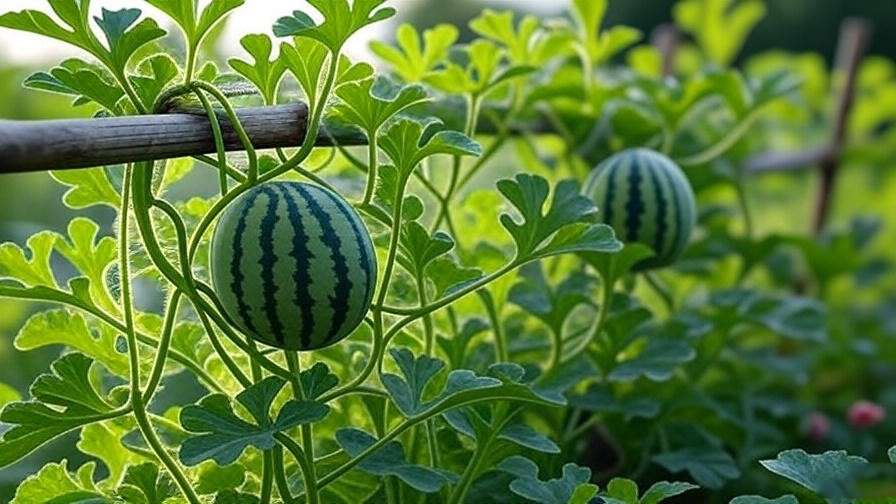
Protecting Blue Watermelons from Pests and Diseases
Common Pests
Blue watermelon plants face threats from pests like aphids, cucumber beetles, and spider mites. Aphids can be controlled with neem oil or insecticidal soap, applied in the early morning. Cucumber beetles, which spread bacterial wilt, can be trapped with yellow sticky traps or deterred with row covers. Companion planting with marigolds or nasturtiums repels pests naturally. Regular monitoring helps catch infestations early.
Preventing Diseases
Fungal diseases like powdery mildew and fusarium wilt are common challenges. Powdery mildew appears as white patches on leaves and can be treated with organic fungicides like sulfur or potassium bicarbonate. Prevent wilt by rotating crops every 2-3 years and using disease-resistant varieties. Ensure proper spacing (3-4 feet between plants) to improve air circulation and reduce humidity around foliage.
Monitoring Plant Health
Weekly inspections are key to maintaining plant health. Check leaves for discoloration, spots, or wilting, and inspect stems for signs of rot. Use a soil moisture meter to ensure consistent watering, and test soil periodically for nutrient deficiencies. Early intervention—whether through pruning, pest control, or adjusting care—can save your crop.
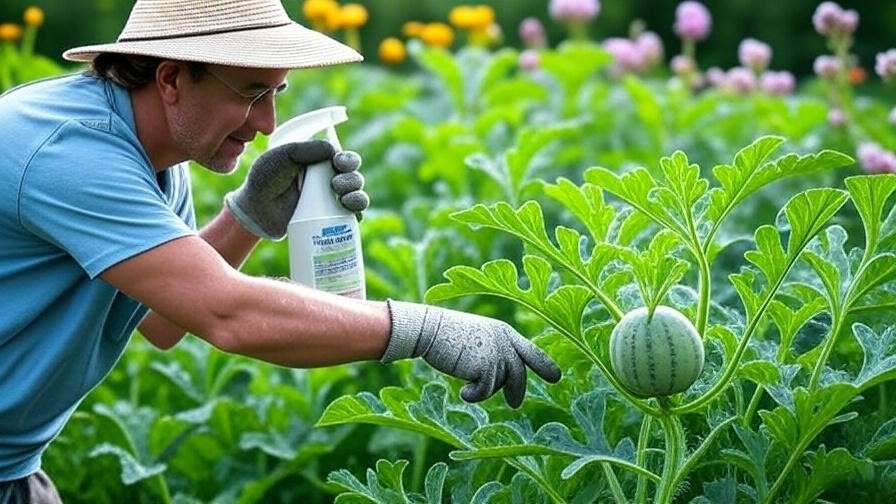
Harvesting and Storing Blue Watermelons
Knowing When to Harvest
Timing your harvest is critical to enjoying the sweet, vibrant flavor of blue watermelons. Look for these signs of ripeness: the underside of the fruit turns creamy yellow, the rind takes on a dull, waxy appearance, and the fruit produces a hollow “thump” when tapped. Typically, blue watermelons are ready 80-100 days after planting, depending on the variety and growing conditions. Check the tendril closest to the fruit—if it’s brown and shriveled, the watermelon is likely ripe. For precision, use a refractometer to measure sugar content (aim for 10-12% Brix for peak sweetness).
Harvesting Techniques
To harvest, use clean, sharp pruning shears to cut the stem about 2 inches above the fruit, avoiding damage to the vine or fruit. Handle gently to prevent bruising, as blue watermelons have tender flesh. Avoid pulling or twisting the fruit off the vine, as this can harm the plant and reduce future yields. Harvest in the early morning when temperatures are cooler to preserve freshness. If you’re growing multiple fruits, stagger harvesting to enjoy a prolonged season.
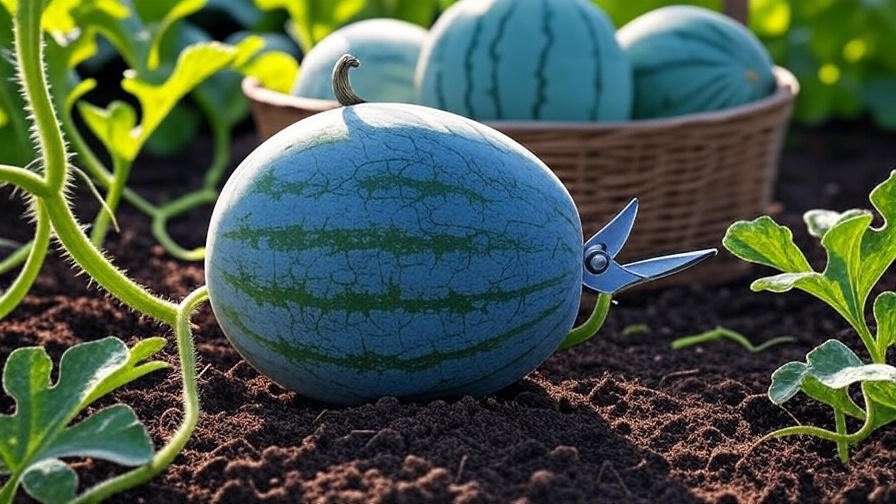
Storage and Preservation
Store whole blue watermelons in a cool, dry place (50-60°F) for up to 2 weeks. Avoid stacking to prevent pressure marks. For cut pieces, wrap tightly in plastic wrap and refrigerate for up to 5 days. To extend shelf life, blend the flesh into juice or freeze it in cubes for smoothies. If saving seeds for next season, scoop them out, rinse thoroughly, and dry on a paper towel for 1-2 weeks before storing in an airtight container in a cool, dark place.
Troubleshooting Common Blue Watermelon Growing Issues
Why Aren’t My Plants Producing Fruit?
If your blue watermelon plants aren’t setting fruit, several factors could be at play. Poor pollination, often due to low bee activity or high humidity, is a common culprit. Boost pollination by planting pollinator-friendly flowers or hand-pollinating as described earlier. Nutrient imbalances, particularly low phosphorus or potassium, can also hinder fruit development—test your soil and adjust with a fertilizer like 5-10-10. Finally, water stress (inconsistent or insufficient watering) can cause plants to prioritize survival over reproduction. Maintain a steady watering schedule and mulch to retain moisture.
Dealing with Small or Misshapen Fruit
Small or misshapen blue watermelons often result from inconsistent watering, nutrient deficiencies, or overcrowding. Ensure plants receive 1-2 inches of water weekly, adjusting for rainfall. Apply a balanced fertilizer during fruit set to support development. If vines are overcrowded, prune secondary runners to focus energy on fewer fruits. Misshapen fruits may also indicate poor pollination—hand-pollinate to ensure uniform fruit growth. Healthy fruits should be round or slightly oval with vibrant blue flesh when cut.
Yellowing Leaves or Wilting Plants
Yellowing leaves or wilting can signal overwatering, underwatering, or disease. Check soil moisture—if it’s soggy, reduce watering and improve drainage. If dry, increase irrigation frequency. Root rot, often caused by fungi like Phytophthora, may require removing affected plants and treating soil with a biofungicide. Yellowing leaves could also indicate nitrogen deficiency; apply a balanced fertilizer and monitor response. For persistent issues, consult your local agricultural extension for a precise diagnosis.
Expert Tips for Maximizing Blue Watermelon Success
- Use Row Covers: Protect young plants from pests and late frosts with lightweight row covers, removing them during flowering to allow pollination.
- Rotate Crops: Prevent soil-borne diseases by rotating watermelons with unrelated crops (e.g., legumes or brassicas) every 2-3 years.
- Experiment with Companion Plants: Pair blue watermelons with marigolds or borage to deter pests and attract pollinators, enhancing yield and flavor.
- Expert Insight: Dr. Jane Ellis, a horticulturist at the University of Georgia Extension, notes, “Blue watermelons require meticulous care, but their unique aesthetic and flavor make the effort worthwhile. Focus on soil health and consistent care to avoid common pitfalls.”
Blue Watermelons in Your Garden: Creative Uses and Inspiration
Culinary Applications
Blue watermelons aren’t just a visual delight—they’re a culinary gem. Their sweet, juicy flesh pairs beautifully in fresh salads with feta and mint, or blend it into smoothies for a nutrient-packed drink. Try grilling slices for a caramelized twist or pureeing into sorbets for a refreshing dessert. For a show-stopping dish, hollow out a blue watermelon and use the rind as a bowl for a fruit salad featuring its vibrant flesh alongside berries and citrus.

Aesthetic Garden Design
Incorporate blue watermelons into your garden for a striking visual effect. Train vines along trellises or pergolas to create a living canopy, or plant in raised beds with colorful companion plants like zinnias for a vibrant display. Their striped rinds and sprawling vines add texture to garden layouts, making them perfect for social media photos. Share your garden on platforms like X with hashtags like #BlueWatermelon or #ExoticGardening to inspire others.
Sharing Your Harvest
Blue watermelons are a hit at farmers’ markets or community garden swaps due to their novelty. Package them in eco-friendly baskets with care instructions to attract buyers. Alternatively, gift them to neighbors or friends to spread the joy of gardening. Engage with local gardening groups or online forums to share tips and learn from others’ experiences growing exotic fruits.
Frequently Asked Questions (FAQs)
Q1: Are blue watermelons genetically modified?
No, blue watermelons are not GMOs. They’re hybrids created through selective breeding to enhance anthocyanin content, giving their flesh its unique blue hue. This natural process is safe and widely used in horticulture.
Q2: How long does it take for blue watermelons to grow?
From planting to harvest, blue watermelons typically take 80-100 days, depending on the variety, climate, and care. Warm weather and proper nutrition can speed up growth.
Q3: Can I grow blue watermelons in containers?
Yes, blue watermelons can grow in containers at least 18-24 inches deep and wide. Use a well-draining potting mix, provide a trellis for vine support, and ensure consistent watering and fertilization.
Q4: What makes blue watermelon flesh blue?
The blue color comes from anthocyanins, natural pigments with antioxidant properties. These compounds are influenced by genetics and environmental factors like sunlight and soil nutrients.
Q5: How do I save blue watermelon seeds for next season?
Scoop seeds from ripe fruit, rinse off pulp, and dry them on a paper towel for 1-2 weeks. Store in an airtight container in a cool, dark place to maintain viability.
Conclusion
Growing blue watermelons is a rewarding journey that combines horticultural skill with the thrill of cultivating something truly unique. By following this guide—covering soil preparation, planting, care, and troubleshooting—you’re equipped to produce vibrant, healthy plants and enjoy their stunning fruit. Start your blue watermelon adventure today, and share your progress with our gardening community! For more expert plant care tips, subscribe to our newsletter or explore related guides on exotic fruit cultivation.













